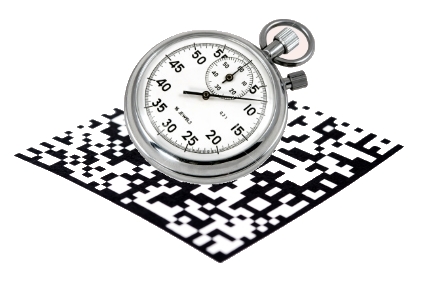
Fewer than 10 per cent of medicines in the US have 2D barcodes that contain the data elements required under the Drug Supply Chain Security Act legislation, an assessment on serialisation progress has revealed.
The findings come from a GS1 report – titled Assessing Current Implementation of DSCSA Serialization Requirements – where data was compiled by wholesale distributors AmerisourceBergen and McKesson in May last year based on an assessment of products in some of their warehouses to obtain a “snapshot of implementation progress”.
The result of the assessment shows that just 6.6 per cent of the 16,618 pharmaceutical products scanned had readable barcodes with all four DSCSA-required data elements.
“If the three big wholesalers can’t read your barcode, it’s certainly not going to work for the 200,000 prescribers using barcode scanners,” said Matt Sample, senior director of secure supply chain at AmerisourceBergen. “This is not about the wholesalers. It’s about the entire supply chain.”
The Drug Supply Chain Security Act, which has a phased implementation process and will fully come into force in 2023, requires an electronic, interoperable track and trace system to be introduced to monitor the distribution of drugs in the US to prevent counterfeit, contaminated and diverted drugs.
November last year was the deadline for compliance with phase 2 of the DSCSA and focuses on item-level serialisation where drug products must be marked with a national drug code (NDC), serial number, lot number, and expiration date in both machine-readable and human-readable format.
While the GS1 assessment took place six months before the phase 2 deadline, the report states that the findings would “provide an indicator of how much product in the market today is marked with a barcode containing the four data elements required for DSCSA Phase 2 and that could indeed be read when scanned”.
McKesson scanned 13,571 items (66 per cent of items at the warehouse) from 364 manufacturers (81 per cent of McKesson vendors), with products including all refrigerated items, all narcotics, and all mid and high-turnover items at the warehouse. Meanwhile, AmerisourceBergen scanned 3,047 items (100 per cent of items at the warehouse) from 375 manufacturers (approximately 80 per cent of AmersourceBergen vendors), with a focus on specialty medications.
Of those scanned products, McKesson found just 6.5 per cent of its product inventory had a readable barcode containing all four DSCSA-required data elements, while AmerisourceBergen found only 7.2 per cent of its scanned products met the same required level.
Prior to the assessments, the wholesalers estimated the result would be about 15 per cent. “But the results of the assessments ultimately demonstrated the wide gulf between perception and reality,” the report said.
In addition, the wholesalers found variations in colour combinations and sizes of barcodes, which caused scanning and data capture issues. Variation in the placement of barcodes also prevented data from being automatically captured. There were also issues with date information in many barcodes that were not compatible with digital data transfer, while many 2D barcodes (8 per cent for McKesson) were deemed unreadable because the DSCSA-required data was encoded incorrectly or not present at all.
Serialization specialist Dirk Rodgers, founder of RxTrace and regulatory strategist at Systech International, said in a blog post that the findings should be a red flag for the industry.
“I’m sure the number of products serialised would be significantly higher if the assessment were conducted today, but even from this small sample, a significant percentage of products that manufacturers think they are done with, still have readability problems. That means those manufacturers are going to have to make adjustments to those barcodes again – some minor, some major.”
He particularly voiced concern about the amount of 2D barcodes the were present on products but were unreadable, and which were therefore not compliant. He said this was an indication of a “serious problem” in the industry.
However, the wholesalers noted in the report that there was room for optimism and expected more correctly serialised product to make their way to warehouses.
Although the FDA recently indicated that it is according pharmaceutical manufacturers a “period of enforcement discretion” — a grace period of one year — before it imposes any penalties or fines for non-compliance, the report states that it is now time for the industry to accelerate its serialisation implementation and warned against using the FDA enforcement discretion as an extension of implementation.
©
SecuringIndustry.com





